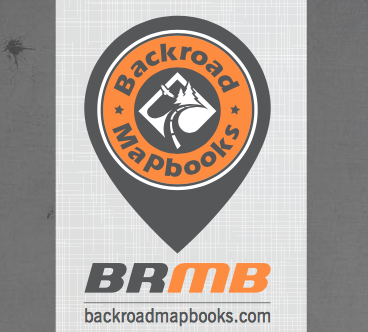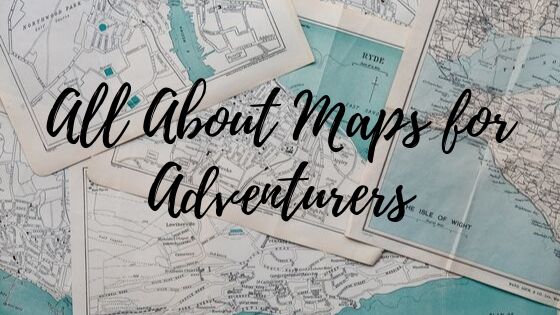Maps are an adventurers best friend. With a good map you can plan a trip, stay found and have a great souvenir! The key to maps is using the right one for what you’re doing and know how to use it effectively. In this post, All About Maps for Adventurers, we will cover all this and more. Let’s go!
What Makes a Good Map
A good map must include all the details you will need for your adventure. All outdoor adventure maps should include topographic lines, roads and shaded areas outlining forests and barren land. Your map should have a north arrow, show declination, and feature a grid of either or both degrees or UTM.
Your map should be at a scale of 1 to 25,000 for optimal navigation or allow you to zoom in to better see features. You can use a map of 1 to 50,000 or greater for some applications like route planning.
A good map should also be waterproof.
Types of Maps



Paper
Paper maps are considered to be the most reliable form of navigation. There’s no batteries that can die or software that will glitch, and people have been using paper maps for hundreds and hundreds of years. Your paper map will need to be waterproofed and you will need to be careful to not rip it.
Although a seemingly simple form of navigation, for me, paper maps have always been my go to. Plus they make a great souvenir!
Digital
Digital maps are definitely a handy tool. They allow you to see where you are at any given moment and can help you to find new locations to explore more quickly. The main downfall of digital maps is they require a battery which can fail.
Digital maps also store additional layers of information which paper maps cannot. For example, when you load in Google maps you can use a variety of views to see roads, terrain, or satellite imagery. Google can also show you photos of an area and you can use tools to measure distances and drop pins to mark locations. All of these features are very handy.
Road vs. Topographic
Roadmaps are what you use when you turn on your map app to give you directions to that new restaurant. A topo map (short for topographic) shows you the three dimensional landscape in a two dimensional print.
Road maps are great for navigating cities or on a cross country road trip but they are not good enough for anything you want to do in the back country. Especially if you want to start going off trail exploring this is when you most definitely need to have a topographic map.
Whats the Best Map for My Sport
Different sports require different types of maps or apps here’s my list for the sports that I participate in;
- Mountain Biking – Trailforks app
- Hiking – I use a variety of maps such as All Trails app, paper topographic maps, and Garmin GPS maps.
- Rock Climbing – we use the Mountain Project app as well as Backroad Mapbooks.
- Backcountry Skiing – I like to stick with a paper topographic map and my Garmin GPS I pair this with the Avalanche Canada app on my phone for current avalanche conditions.
- Sea Kayaking – we will use nautical charts and paper topographic maps paired with the Garmin GPS.
Check out our post 10 Awesome Apps Every Hiker Must Try (No.8 Can Even Save Your Life) for a run down on various apps that can help you navigate.
Local Guidebooks
For all of the outdoor sports you can usually find a local guidebook to help you with finding trails and routes. The maps included in these books are not usually intended for navigation, but provide a birds eye view of the area to help you get your bearings. These local guide books are usually worth the $30 or so dollars to get you familiar with a new area quickly. Here’s a few guide books I have used for different areas in Canada and highly recommend;
- Sport Climbs in the Canadian Rockies – 7th Edition
- Bow Valley Rock
- Hikes of Western Newfoundland
- Mountain Footsteps: Hikes in the East Kootenay of Southeastern British Columbia – 4th Edition
- Don’t Waste Your Time in the Canadian Rockies: The Opinionated Hiking Guide
Using Your Map


In our new online course, Mastering Day Hiking, we include a whole module on navigation. Click here to check it out.
The basics of using your map include knowing how to orient your map towards the north, how to discern landmark features, how to take measurements like bearings and determine distances, and be able to find your position on the map when you become geographically miss-placed. These are skills that you can learn easily online and then, with a bit of practice, you can be a self-sufficient navigator in no time.
If you are using a GPS map, you need to understand the software, make sure that you are able to orient it in both in the direction of travel as well as north, and be able to pull your coordinates out of the GPS to share with others as needed.
Where to Find Good Maps
For most applications in Canada, a Natural Resource Canada supported topographic map is your best friend. You can find these online at sites such as canmaps.com, Backroad Mapbooks, and atlas.gc.ca/toporama.
<iframe style="width:120px;height:240px;" marginwidth="0" marginheight="0" scrolling="no" frameborder="0" src="//rcm-na.amazon-adsystem.com/e/cm?ref=tf_til&t=outandonthego-20&m=amazon&o=15&p=8&l=as1&IS1=1&npa=1&asins=1553418948&linkId=8032a2269939f71fd537f9d0ee79fdf1&bc1=ffffff<1=_blank&fc1=333333&lc1=0066c0&bg1=ffffff&f=ifr">
</iframe>To get a paper copy of a topographic map you will have to print it or buy it from an authorized retailer. For example you can order online from places like Mountain Equipment Co-op, Backroad Mapbooks, National Geographic Trail Maps, or REI Waterproof Maps. For local paper maps, head over to your crowned land office and ask for a map of the area you need. Crown lands maps are cheaper (usually around $10+tax) and you can get them for any area of Canada.
For digital maps, most mapping software comes with the option to purchase topographic maps for download. I have been using Garmin for many years and have their Basecamp mapping software on my laptop. I had to purchase a package for topographic maps of Canada and can now route plan, pre-build tracks, upload them to my GPS unit as well as print maps for areas directly from my computer.

For multi activity maps, I find Backroad Mapbooks to be the best of the best. Their maps are big meaning 1:200,000 or very “zoomed out” making them hard to hike with for example but they give an excellent birds eye view of a large area and include an abundant amount of information for fishing, hiking, rock climbing, mountain biking, ski touring, and much more.
Maps are one of your 10 Essentials and you should always take a map with you when you head out into the wilderness. I hope this All About Maps for Adventurers post helps you find the right map for your next adventure! If you liked this post, consider sharing it with your adventure buddies so they can also learn more about maps 🙂
*You should assume that any links leading you to products or services are affiliate links and that I will receive commission from your purchase. This will not incur additional cost to you. You can review our Disclaimer Page for full info.
